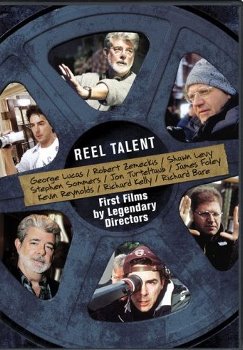
One of George Lucas’ statements surrounding the sale of LucasFilm LTD. to Disney is that he will be making “experimental movies.” Now if you think about the differences between anything from the early Edison experiments to some people calling Cloud Atlas experimental because it balances six traditional narratives simultaneously instead of focusing on one, the term experimental has never really been definitive in the history of cinema. So what could he mean? After all, his breadth is not confined to adventures through space and Christian (alien?) iconography, as he’s had a hand in producing anything from Godfrey Reggio’s Powaqqatsi to Akira Kurosawa’s Kagemusha.
Well, if we look back to some of his early short films, they may just provide some hints toward the type of stuff Lucas may be gearing down to do.
A DVD collection called Reel Talent features student films created by Lucas during his time at USC. Below are reviews of two of his films from this set.
1:42.08 to Qualify (1966)
This seven minute long short is relatively light on narrative. It protracts a lap made by driver Peter Brock in a 1100cc G Modified Lotus 23 to qualify for a race. Lucas uses the opportunity to explore different ways of shooting and editing the vehicle, from close-ups showcasing the internal mechanisms of the Lotus 23 to abruptly different angles to showcase its course and try to create differing illusions of speed and acceleration. Near the end a plot point is placed into the otherwise abstract technical experiment as the car drifts and then control is reclaimed.
This short is, perhaps, not going to be very interesting to the type of audiences eager to see Star Wars mythic narratives, but other students and filmmakers can appreciate the techniques and how Lucas seems to be learning how to shoot and edit in real time just as a racecar driver is figuring out his controls. A sort of unintentional allegory can be read here about starting off on your own lonely track and managing to qualify for the big race. Or George Lucas just really likes cars, since he wanted to be a racecar driver and went on to make American Graffiti.
Electronic Labyrinth THX 1138 4EB (1967)
Along with Freiheit, this movie is sort of a prototype of THX 1138, itself justifiably ‘experimental’ in terms of minimalist mise-en-scene (like a futuristic A Man Escaped, really). Here is where I play with fire critically and state that Electronic Labyrinth is far more interesting than the feature length sci-fi classic that shares its name, mostly because it’s more maddening.
A chaotic, fractured race occurs resembling the closing escape from THX, only built out of substantially cheaper ‘sets’ (that are more like found locations). To match the dissonant visuals are equally dissonant sounds, as electronic voices and computer noises seem to ‘track’ the runner through the ‘electronic labyrinth’. At any given point it is unclear precisely what is happening, which is why most viewers are likely to write off this film on principle. In another sense, the experience is absolutely what I imagine trying to escape a virtual reality after your mind has been uploaded and a virus has taken over would be like. It is a rather psychedelic and visceral project, effects that are disappointingly missing in Lucas’ more massive and mainstream work.
These two movies point the way toward a tech geek keenly interested in developing every level of production and expanding upon different methods of using those techniques. For someone more interested in experimental film, it makes his later career more disappointing than the Star Wars prequels were to many fans. It would be nice to see Old George Lucas dig up Young George Lucas and tinker around like he used to, but it’s really hard to tell what he means based off of what he says anymore.
–Dane Benko
